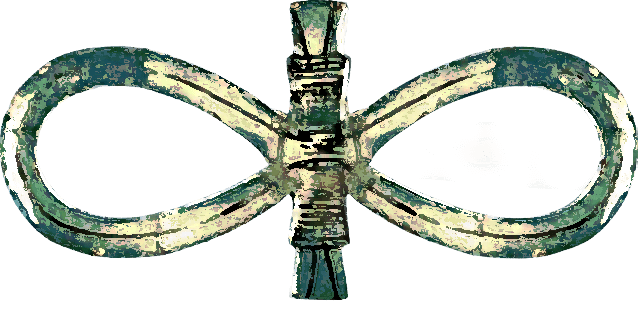Mortalis Permisima
The Mortalis Permisima, or 'Permission of Mortality', is the core pillar of the Fifth Dogma. It dectates that a any mortal with a possesion of a soul is the sole vassle and owner of that soul during their lifespan in the Material Planes, and that during this time they are permitted to do with it as they wish. Among the existance of free will, morality and other important aspects of a person's life, this also extends to the choice of life and death.
History
The origin of the term Mortalis Permisima itself is unknown, but mentions of it in contracts predate the Great Conquest of Ader. The earliest modern use of the phrase is in scrolls depicting contracts that where found on the Isle of Darseras. Older versions of the concept can also be found in several other locations and cultures around Edora, but lacking the distinction of the planes.
After the establishment of the Andorian Church in Lake Kadia most of the northern part of the continent shifted in their beliefs. The church view of the soul was that it is the property of the divines, bestowed upon mortals to keep safe as it fulfill its role, and not as a manifestation of a mortal's will or personality.
Mesmodera was perhaps the most prolific person to advocate the concept after the rise of the Andorian Church. The strict contradiction with the Dogma of The Four on the subject was the source of many cases of Salemizia.
Following the inception of the Vintian Imperium, Mesmodera further advanced the idea of mortals being the owners of their own souls and free will. She even pushed it as far to include the right of choosing whether to live or die. This addition has survived to modern times and was the basis for the forming of the Fifth Dogma.
During the Lingering Death and especially after the Battle of the Second Sun, souls of the dead began to linger in the southern parts of the continent. These souls had to be either resurrected in some form or way, or slain and be sent forever into the abyss. While most nations simply tasked their armies with the task of dispatching those rogue spirits, the Mortalitasi of the Imperium would scout the Imperial Lands, identify and retrieve souls of lingering mortals to later release them into the Astral Plane in a ceremony called Viam Mortis.
While the ceremony was helpful to ensure the passing of mortals from the prime material realm, it did not guaranteed the soul would be able to cross the astral planes into the correct outer plane. This caused fear in some, especially those who devoted their lives to a singular god. Some, especially in the Imperium, would request their loved ones not to interfere with with their passing. These requests became so frequent they have often found themselves into contracts and other documents, especially those revolving around Slavery or the freedom of an individual.
With the emergence of the Fifth Dogma, the concept of swearing Mortalis Permisima was embedded deeply into the cultural aspects of the religion, which put the individual at the forefront, who choose a god to receive their soul in the afterlife. This is in stark contrast, where an individual is admitted to a certain god shortly after birth.
Other cultures that differentiate between the soul's ownership in life and death, such as the Ashara, view death as a natural law similar to any other. This stems from the belief that a perfect god would not leave loopholes unless they intended for mortals to use them. Under the Ashara, the soul is never the property of the mortal, but given for him to do as he sees fit and release it once it's purpose has been fulfilled. Swearing Mortalis Permisima as a follower of the Ashara is generally viewed as a step toward enlightenment, and is more encouraged than elsewhere.
Execution
The process of swearing Mortalis Permisima is different depending on the culture and religion of the individual who takes the oath, but the general process remains the same. First, the person would relinquish any and all means that could be used to revive them. In some cases it is customary to notify those of close kinship about the oath. Regardless of sharing the information with its surroundings, and depending on the nation, the individual may also be required to report the change to a local bureaucratic or legislative body. It is also customary to carry a small pendant or token to ensure proper treatment in case the individual is not able to arrange their affairs before passing.
Current Date: 2nd of Latsum, 1572
Kisharan Promise Necklace
A token simbolizes Mortalis Permisima. Always made from metal and has 60 beads set in 30 pairs. Usually worn around the neck but can also be adorn as a Tiara.
Black Diamond Promise Ring
by
Wikimedia (Edited)
In the Vintian Imperium, black diamonds signify a vow of Mortalis Permisima. It can be adorn in any form, but must be visible to the naked eye from a glance. Instead of diamonds, common folks will mostly use blackened nuggets of iron, tar coated pebbles or pieces of charcoal.






What a fascinating tradition! I really like the inclusion of the jewelry worn by those who would rather not be brought back. The pictures are quite beautiful! :) Great work.